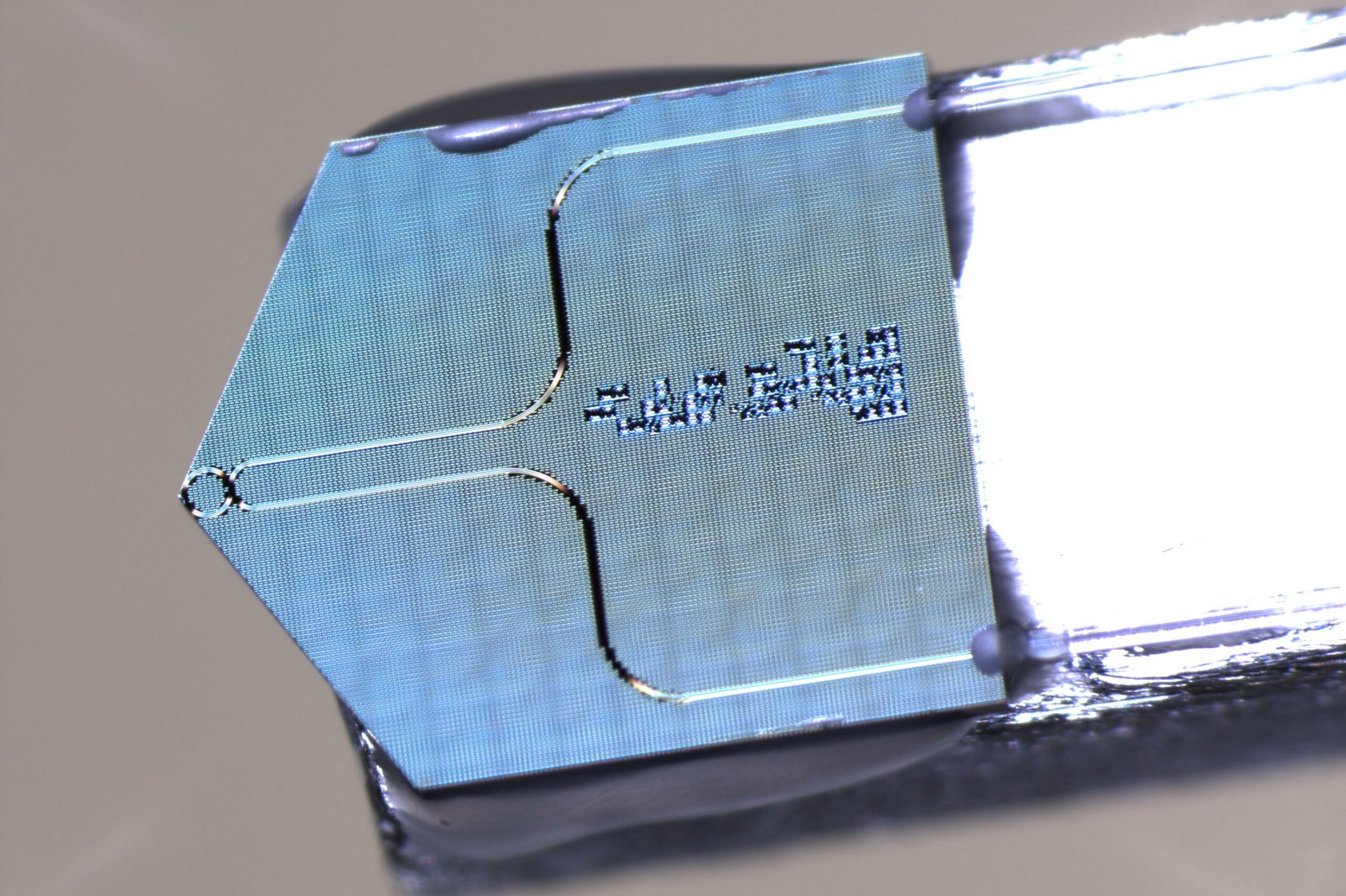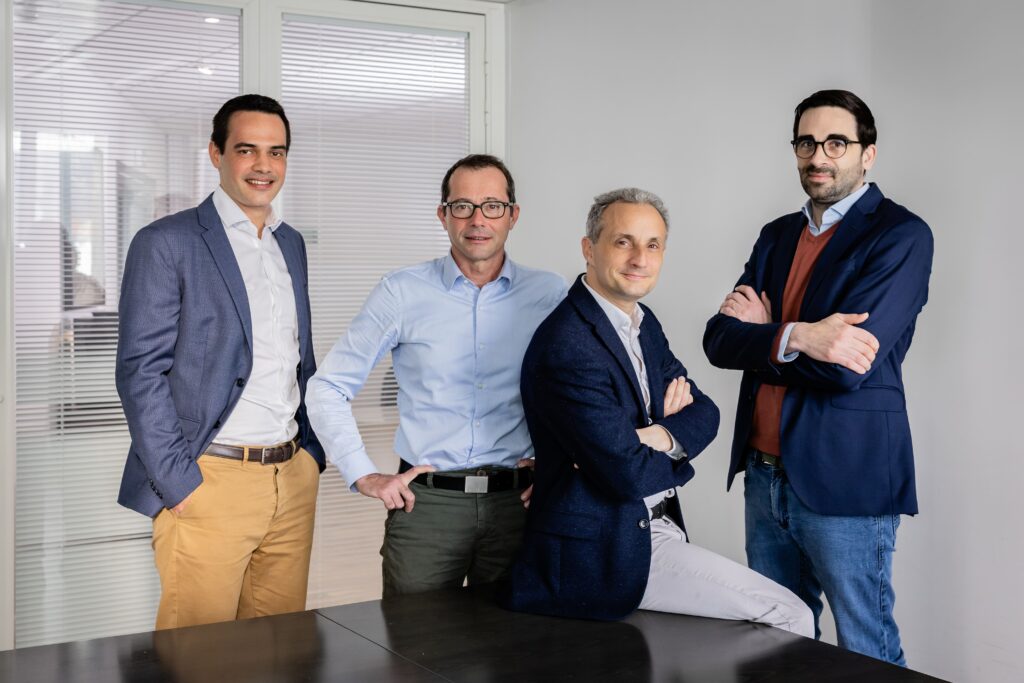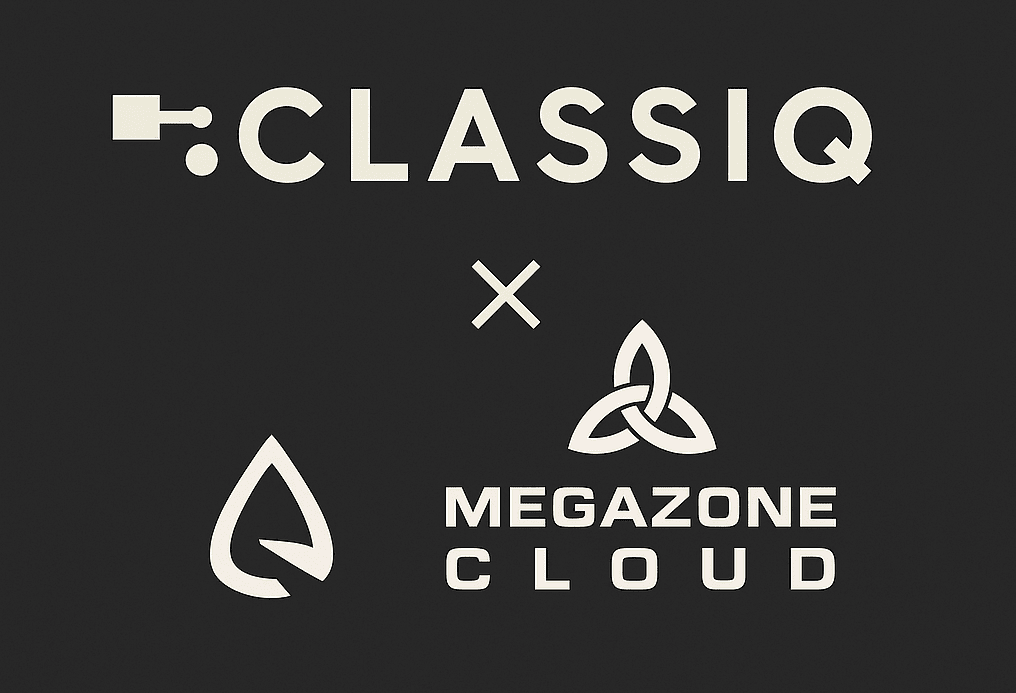Image: Armin Feist / Max Planck Institute for Multidisciplinary Sciences
Insider Brief
- Researchers demonstrates for the first time a novel method for generating free-electron/cavity-photon pairs using chip-based photonic integrated circuits in an electron microscope.
- In this new approach, researchers use a beam of an electron microscope, which passes a built-in integrated photonic chip, consisting of a micro-ring resonator and optical fibre output ports. Whenever an electron interacts with the vacuum evanescent field of the ring resonator, the system evolves into an electron-photon pair state.
- On its significance, EPFL researcher Tobias Kippenberg said, “For the first time, we bring free electrons into the toolbox of quantum information science. More broadly, coupling free electrons and light using integrated photonics could open the way to a new class of hybrid quantum technologies.”
RESEARCH PRESS RELEASE — Faster computers, tap-proof communication, sensors beyond standard quantum limit – quantum technologies have the potential to revolutionize our lives just as once the invention of computers or the internet. Experts worldwide are trying to implement findings from basic research into quantum technologies.
Therefore, they sometimes require individual particles, such as photons – the elementary particles of light, with special properties. However, obtaining individual particles is complicated and requires complex methods. Various applications already use free electrons to generate light, such as the case in X-ray tubes.

A new study, recently published in the journal Science, now demonstrates for the first time a novel method for generating free-electron/cavity-photon pairs using chip-based photonic integrated circuits in an electron microscope. The study is conducted by a collaboration between the groups of Claus Ropers at the Göttingen Max Planck Institute (MPI) for Multidisciplinary Sciences and the University of Göttingen, and Tobias Kippenberg from EPFL, the Swiss Federal Institute of Technology in Lausanne.
Fundamental Particle Physics in Electron Microscopes
In the experiment, the beam of an electron microscope passes a built-in integrated photonic chip, consisting of a micro-ring resonator and optical fibre output ports. This new approach, using photonic structures fabricated at EPFL (Lausanne) for TEM experiments performed at MPI-NAT (Göttingen), was established in a recent study. Whenever an electron interacts with the vacuum evanescent field of the ring resonator, the system evolves into an electron-photon pair state, a superposition between the cases of one photon generated and no photon generated. Obeying the laws of energy- and momentum conservation, in the case when one photon is generated, the electron loses the energy quantum of a single photon. With a newly developed measurement method, both electron energy and generated photons, are detected simultaneously, revealing the underlying electron-photon pair states.
Future quantum technology with free electrons
Besides observing this process for the first time at the single particle level, these findings implement a novel concept for single-photon or electron generation. Specifically, the measurement of the pair state enables heralded particle sources, where the detection of one particle signals the generation of the other. This is necessary for many applications in quantum technology and adds to its growing toolset.
“The method opens up fascinating new possibilities in electron microscopy. In the field of quantum optics, entangled photon pairs already improve imaging. With our work, such concepts can now be explored with electrons,” Max Planck Director Claus Ropers explains.
In the first proof-of-principle experiment, the researchers make use of the generated correlated electron-photon pairs for photonic mode imaging, achieving a three-orders of magnitude contrast enhancement. Dr. Yujia Yang, a postdoc at EPFL and a co-lead author of the study, adds: “We believe our work has a substantial impact on the future development in electron microscopy by harnessing the power of quantum technology.”
A particular challenge for future quantum technology is how to interface different physical systems. “For the first time, we bring free electrons into the toolbox of quantum information science. More broadly, coupling free electrons and light using integrated photonics could open the way to a new class of hybrid quantum technologies,” says Tobias Kippenberg, professor at EPFL.
The work from the collaboration between the two teams from EPFL and MPI-NAT contributes to the currently emerging field of free-electron quantum optics, and demonstrates a powerful experimental platform for event-based and photon-gated electron spectroscopy and imaging. “Our work represents a critical step to utilize quantum optics concepts in electron microscopy. We plan to further explore future directions like electron-heralded exotic photonic states, and noise reduction in electron microscopy,” says Guanhao Huang, a PhD student at EPFL and another co-lead author of the study.
Team includes: Armin Feist, Guanhao Huang, Germaine Arend, Yujia Yang, Jan-Wilke Henke, Arslan Sajid Raja, F. Jasmin Kappert, Rui Ning Wang, Hugo Lourenço-Martins, Zheru Qiu, Junqiu Liu, Ofer Kfir, Tobias J. Kippenberg, & Claus Ropers (2022). Cavity-mediated electron-photon pairs. Science, 377(6607), 777-780.
DOI: 10.1126/science.abo5037
If you found this article to be informative, you can explore more current quantum news here, exclusives, interviews, and podcasts.
















